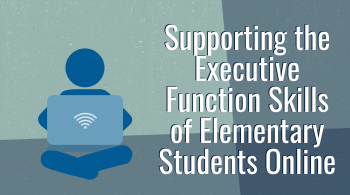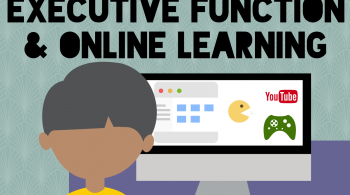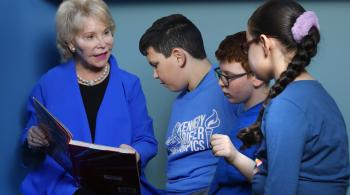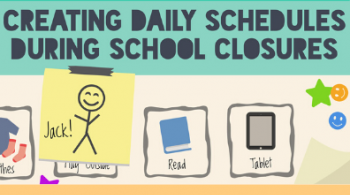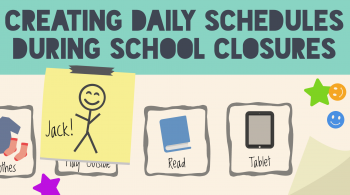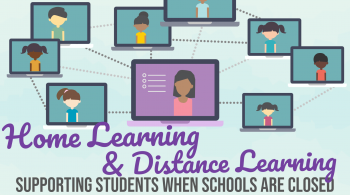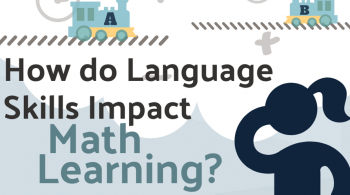February 9, 2016
The current fellows at the Center for Innovation and Leadership in Special Education sat down with attorney Maureen van Stone to discuss the legal requirements for identifying a student with a specific learning disability.
Ms. van Stone is the Director of Project HEAL (Health, Education, Advocacy, and Law), Maryland’s only medical-legal partnership, which provides advocacy and legal services to low and moderate-income families and children with disabilities who receive services at Kennedy Krieger Institute. She is also the Associate Director of the Maryland Center for Developmental Disabilities (MCDD).
Fellows: How are students determined eligible for specific learning disability services? When and how often is a specific learning disability evaluated?
Students with specific learning disabilities (SLD) should go through the typical eligibility process just like any other student with a disability. Anyone can refer the student for an initial evaluation to determine eligibility; however, the person who is referring the child for the initial eligibility evaluation should be clear that the suspected disability is in fact a SLD, so that the evaluator will know what types of testing assessments and measures they should implement to specifically look for a SLD in reading, written language, or mathematics. I think it is helpful for the Individualized Education Program (IEP) team to know what the parent, physician, or the outside provider suspects, so they can select testing instruments that might be most likely to identify whether or not there is a SLD. If the child is then determined eligible for special education and related services, the parent can ask for additional testing or a reevaluation not more than once annually but, at least once every three years. If after three years the parent and the school system agree they do not need any additional data or information on the child, then they can opt out of the reevaluation.
Fellows: Can you describe the difference between the discrepancy model versus Response to Intervention (RTI)?
The discrepancy model had been utilized for many years in terms of identifying students with specific learning disabilities, particularly looking at the IQ of the child versus their school performance and determining whether or not the child was eligible special education services. Theoretically, the special educator would wait to see if there was a discrepancy between a student’s IQ and their performance. They would generally wait for several years until the discrepancy would grow so wide that they would determine the child eligible for special education and related services.
The problem and criticisms of the discrepancy model were basically that it was a “wait and see” approach. Part of the issue of the discrepancy model was that, as the child became more frustrated with the academic demands, we saw secondary effects of the child not receiving the appropriate accommodations, modifications, and supports. A child who may just have presented with a specific learning disability might now present as an anxious child. Children may present with behavior problems, school refusal, or other secondary effects, because their needs were not being met in the school.
We moved from that model to the “Response to Intervention” Model, which can be applied to general education students of all ages. It does not require that “wait and see” approach or failing for a specific amount of time before being identified. But there are criticisms of the model. Some say it is difficult to identify children with SLD versus those that are just underachievers in school. It will essentially identify all slow learners in school, but not necessarily those that have a SLD in reading, written language, or mathematics. There is no real evaluation process built in to identify if the student has a SLD, and it is difficult to figure out which children you are going to put into the intervention versus those who would just benefit from other generic classroom supports.
In theory, it was schools being more proactive and getting in front of the issue, not trying to over identify kids with a SLD, but to identify those who do not respond to specific interventions in the classroom and figure out what other tiered approaches they may need. I think that part of the breakdown and part of the criticism of RTI was that general educators are not trained effectively in what RTI means. They do not understand the various tiers; they do not know how to report back on the effectiveness or lack of effectiveness of the intervention. I think parents struggle, because generally they are kept out of the loop about what is going on and what RTI techniques are being implemented in the school.
Fellows: If a student is determined eligible for special education services under specific learning disability, what is the next step that the school should take?
The school should identify all areas of need - it may just be reading, it may be reading and written language, it may be reading, written language, and mathematics - but they should use the data that they have from the initial evaluation to determine what areas of need they should be addressing. They should also determine how they want to address it – whether it is going to be specific to the goal and objectives of the IEP in reading, written language or mathematics, or whether it is in the goal and objectives, plus accommodations and modifications and some services. Some services may be specific access to a particular intervention during the day, or extended access to a specific intervention, whether it be pullout or push in, or it may be time to work on specific skill sets so fluency or phonics or some other skill with a specific specialist in the school. A number of families prefer that the school identify the specific intervention that is going to be used. Some school systems are reluctant to identify a particular program; however, I do think that, for families, it is important to know the program or the goals of the program, so that they can replicate and utilize those strategies on their own, such as when they are doing homework.
Fellows: What should teachers do if they suspect a student may have a specific learning disability?
I think it is helpful for the teacher to speak with the parent, since the parent can comment on whether or not they haveidentified any specific concerns in the same areas. The teacher should talk to the parent about a referral for an initial evaluation for special education and related services. Sometimes, it can be a little difficult for teachers to raise the subject with families because children with a specific learning disability can have an invisible disability that the parent may not have identified or may not be thinking about. Even though it is somewhat of a sensitive subject to raise, I think it is important for the teacher to be honest with the parent and help the parent understand the initial referral is simply to figure out if in fact the student does have a qualifying disability, and if they do, what sorts of services and supports can be put in place to help the student meet academic success in school. The intention is to not really give a student a label or to single them out, but to give them the tools they need to be more successful academically.







